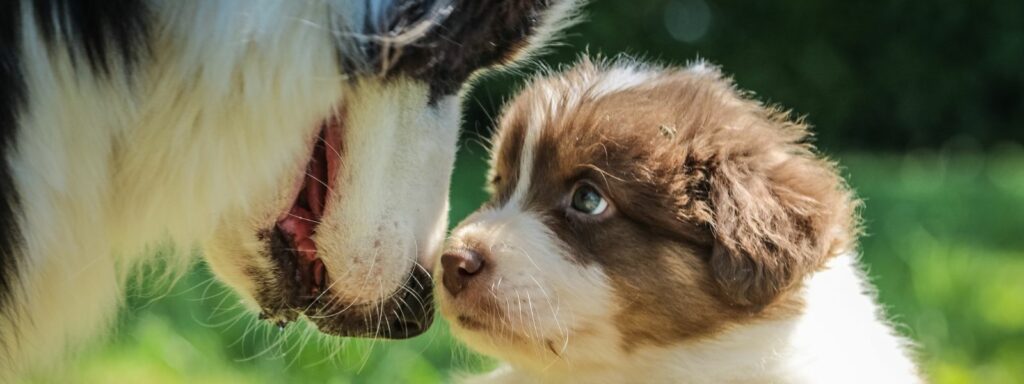Socialisation: the essential guide to a confident puppy
 Synne Hemsen Berg
Synne Hemsen Berg
The journey of raising a puppy is filled with the joy of companionship and growth. An essential aspect of this journey is socialisation. Socialising a puppy is crucial for their development into a well-adjusted, confident and trusting adult dog. This comprehensive guide aims to cover the importance of socialisation, what to socialise to, things to watch out for and frequently asked questions (FAQs).
The importance of socialisation
Socialisation is the process of exposing your puppy to a variety of people, animals, environments, and experiences during their formative weeks. The critical socialisation period starts when puppies are about 3 weeks old and lasts until they are about 12 weeks old. Young puppies are more curious and less scared, and therefore more open to exploring new things, which is why training starts early.
However, socialisation should continue throughout your dog’s life to maintain the good behaviour you have built up. This exposure helps them adapt, ensuring they grow up to be confident and less fearful of the world around them. Proper socialisation leads to fewer behavioural problems, making the puppy more adaptable and comfortable in various situations.

“Socialisation” is a misleading word as it is not just about meeting new dogs and being social with them. It involves everything from taking car rides, being exposed to loud noises such as fireworks and even walking on various surfaces. Start easy and focus on activities that create positive experiences for your dog to build confidence and feel safe. Build up the difficulty of each activity gradually to avoid any bad experiences. What situations you train in has a lot to do with your life situation and what the dog will be exposed to.
How to socialise your puppy
- Early exposure: Start socialising your puppy as early as possible. The golden period for socialisation is between 3 to 14 weeks of age, during which puppies are most receptive to new experiences.
- Positive reinforcement: Use treats, praises, and gentle petting to encourage and reward your puppy’s calm and friendly behaviour.
- Gradual exposure: Start with shorter, less intense socialisation sessions and gradually increase as your puppy becomes more comfortable.

- Choose safe settings: Select environments that are secure, clean, and not overly stimulating for initial socialisation experiences. Ensure your puppy is vaccinated and healthy before engaging in social interactions (especially with unknown dogs), and only interact with vaccinated animals.
- Continuous observation and adjustment: Continuously assess your puppy’s comfort and stress levels during socialisation, adjusting the environment and interaction based on their responses.
- Join puppy classes: Consider enrolling your puppy in socialisation classes where they can interact with other puppies and people under professional guidance.
Common things to socialise to
1. Desensitising scary sounds
Dogs have excellent hearing compared to us and therefore they are especially wary about sounds. Commonly, dogs are afraid of fireworks, thunder, vacuum cleaners, lawnmowers and even the garbage truck. New Year’s Eve is often a time when dogs become frightened and run away from home. Therefore, training dogs to be unafraid of noise will help them be relaxed in these situations.
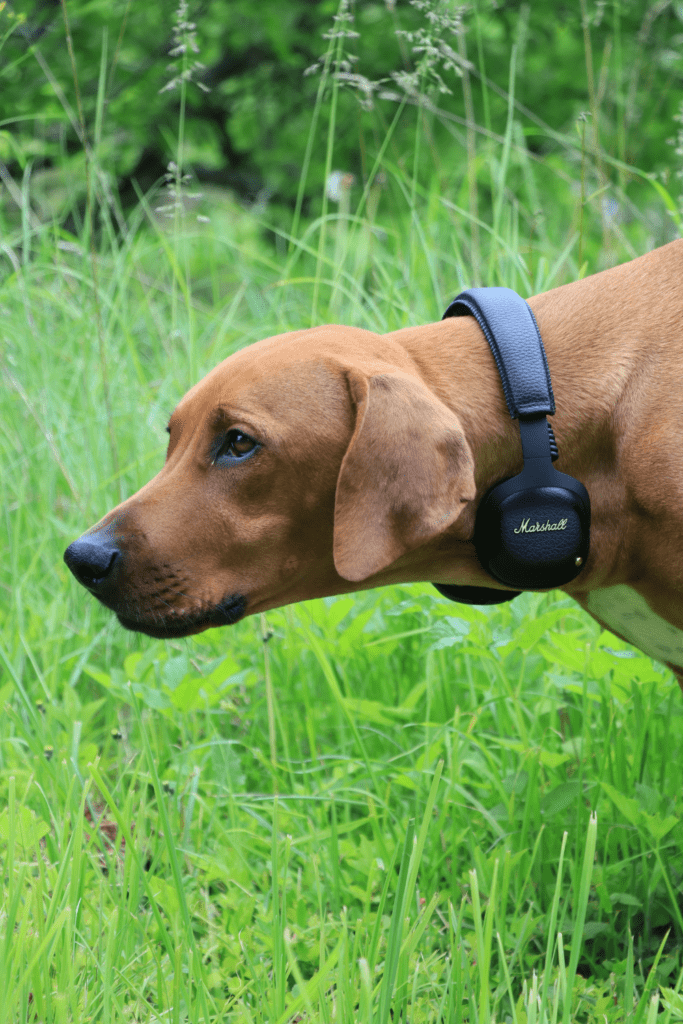
Desensitization to sounds is a relatively simple thing to practice. Find a video on YouTube of the sound you want to desensitise your dog to. This can for example be fireworks or a vacuum cleaner. Start by playing the sound at a low volume sometimes. When your dog seems to be relaxing, you can increase the volume little by little at a time. Cuddle your dog and give treats when you exercise. Practice this over several months, especially with intense sounds like fireworks. You can practice different sounds during the same period.
2. Building confidence in new environments
Training your dog to be confident in various situations is essential for a well-adapted pet. Consider the common environments and situations you and your dog will encounter, such as car trips, boat trips, sports arenas, cafes, and vet visits. Tailor the training to your routines, gradually introducing your dog to these situations to foster comfort and confidence. Creating a list of these scenarios can help organise and guide the training process, ensuring that your dog is exposed to a range of experiences, and building resilience and adaptability in different environments. Remember, the goal is to make each experience as positive as possible to nurture your dog’s overall development and well-being.
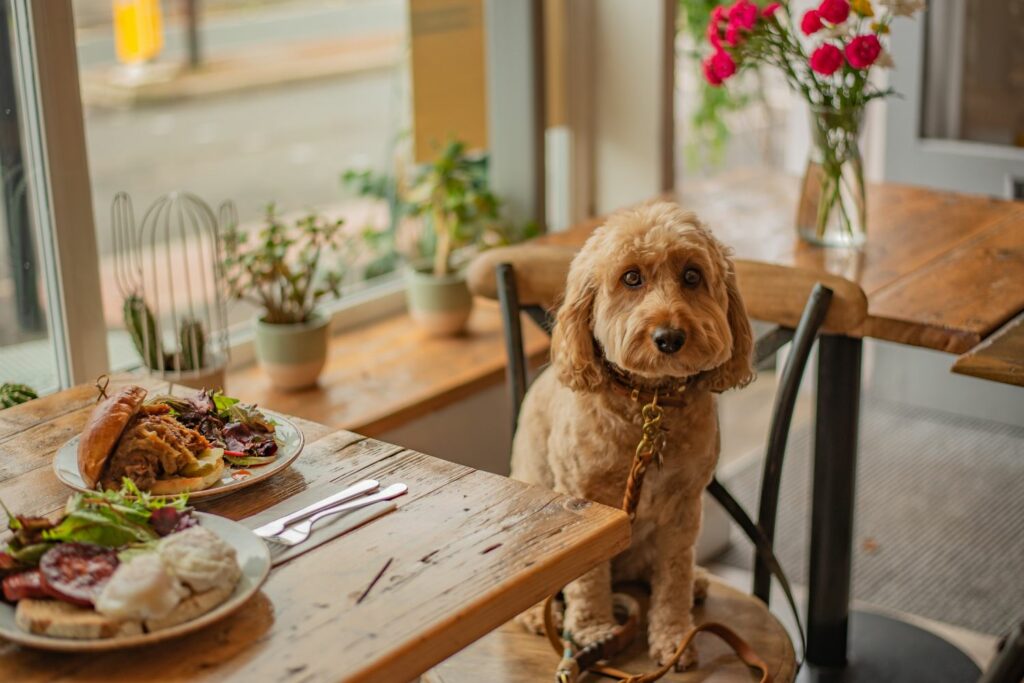
For example, if you want your dog to be well-behaved in a café ensure your puppy is familiar with basic commands like ‘sit’, ‘stay’, and ‘leave it’. Opt for a pet-friendly cafe with a calm environment. Outdoor seating is usually a better choice to start with, as it provides more space and flexibility. On your initial visits, choose less busy times to help your puppy adapt without being overwhelmed by too many distractions. Stay close to your puppy, offering treats and verbal praise for calm behaviour. Allow your puppy to explore and observe the surroundings, keeping interactions short and positive. Gradually increase the duration and frequency of the visits as your puppy becomes more comfortable and well-behaved.
3. Social butterfly with all beings
Ensuring that your dog is well-socialised involves exposure to a variety of beings, including different animals and people across various age groups. Begin introductions based on your dog’s comfort and readiness, respecting signs of hesitation or discomfort. For instance, if planning visits to a dog park, start with observing from a distance, gradually moving closer as your dog shows signs of calmness and curiosity, paired with positive reinforcements like treats and affection. Ensure that your energy is calm and reassuring, as dogs often mirror the emotions of their owners.
In the case of animals such as horses or cows, the goal of socialisation is to foster respectful behaviour and ensure that your dog remains calm in their presence. Direct interaction may not be necessary; the key is to prevent disruptive or potentially dangerous behaviours such as chasing or startling larger animals. Gradually expose your dog to various animals, allowing them to observe and acclimate at a safe distance, ensuring each interaction is controlled and positive.

Children require special consideration during the socialisation process. Always supervise interactions between dogs and children, guiding children on appropriate ways to approach and play with the dog, promoting gentle and respectful behaviour. Ensure that the child understands the importance of treating the dog kindly, and avoiding actions that might harm or agitate the dog. Maintaining control and supervision during these interactions is crucial to ensure the safety and well-being of both the dog and the child.
4. You CAN touch this
Your dog needs to be desensitised to being touched and examined so she is comfortable with the veterinarian, tooth brushing and grooming. You can socialise/desensitise your dog by calmly touching the paws, examining the ears and checking the teeth daily. Also, allow friends and family “examine” your dog so that it gets used to others doing the same. A dog that is comfortable being examined makes grooming and vet visits less stressful.
The list above is for inspiration and guidance. Add activities, sounds and environments that may be relevant to you and your lifestyle. Socialisation is about making your dog used to new experiences to build confidence making your dog safe and calm outside the home.
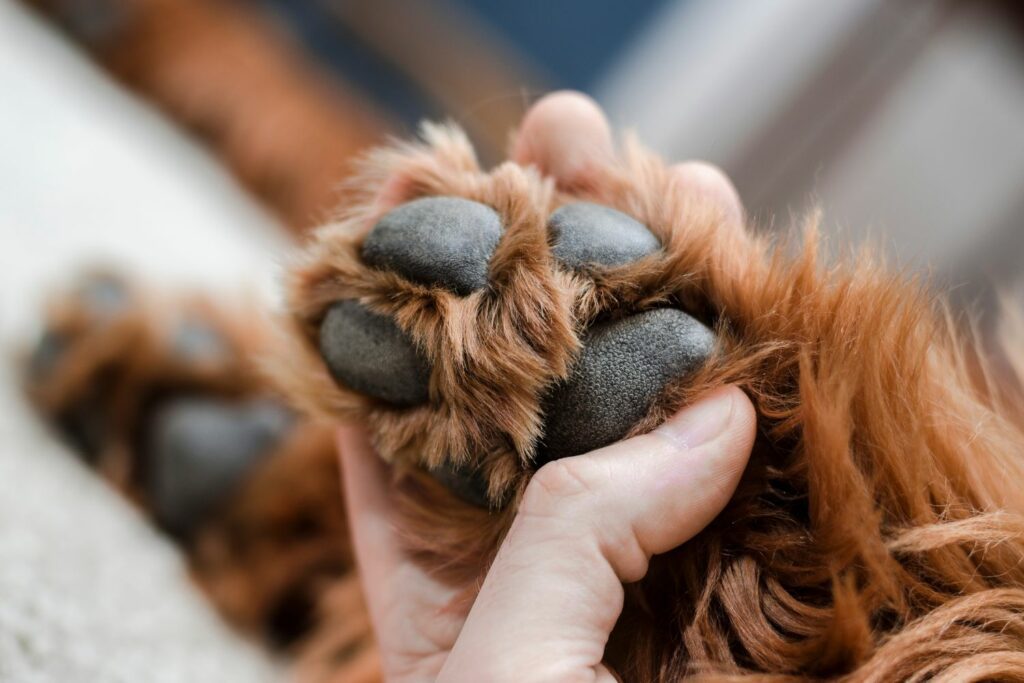
What to watch out for when socialising
- Overwhelm: Avoid overwhelming the puppy with too many new experiences at once. Gradually introduce them to new stimuli and watch their reactions.
- Negative Experiences: Try to ensure that socialisation experiences are positive. Negative experiences can lead to fear or anxiety.
- Health Risks: Ensure your puppy is vaccinated before exposing them to other animals to prevent illness.
FAQs about socialisation
- Q: When is the best time to start socialising a puppy? A: The best time is between 3 to 14 weeks. However, it should continue throughout their life to maintain good social habits.
- Q: Is there such a thing as over-socialisation? A: While socialisation is essential, avoid overwhelming your puppy. Gradually introduce new experiences, ensuring they are positive.
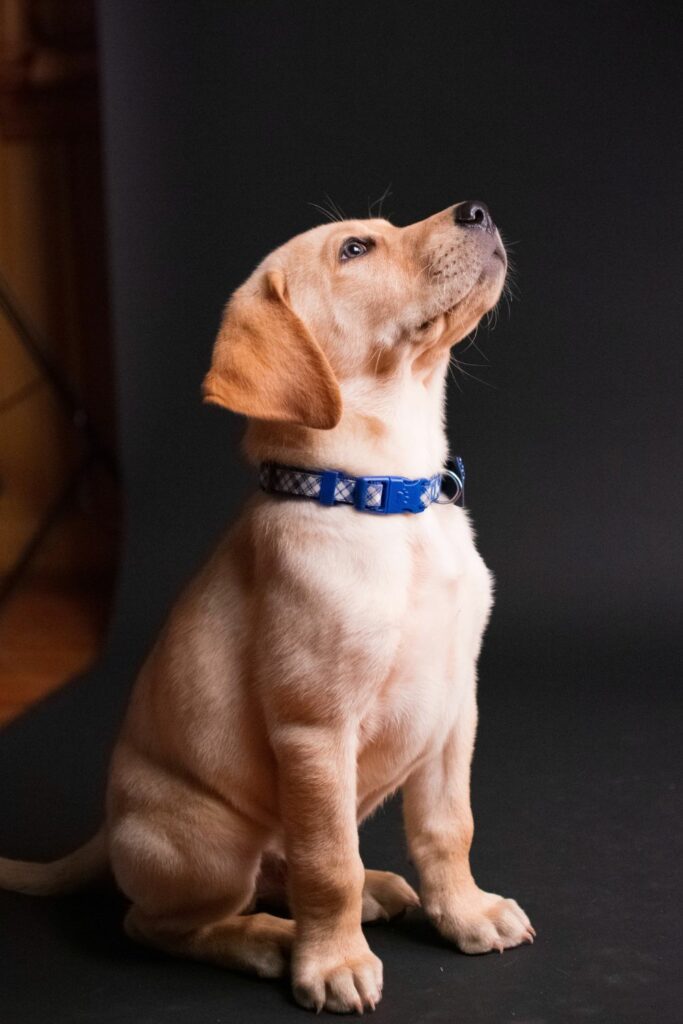
- Q: How should I handle my puppy’s fear or anxiety during socialisation? A: Address your puppy’s fears by exposing them gradually, keeping a “safe” distance to the situation and using positive reinforcement. If the fear persists, consider consulting a professional dog trainer or behaviourist.
- Q: How do I socialise my puppy with other animals, and what should I be cautious of? A: Ensure your puppy interacts with vaccinated, well-behaved animals. Supervise their interactions, keeping them positive and preventing aggressive behaviours. Remember that socialisation can mean that your puppy just observes and they do not need to interact.
In conclusion, socialising your puppy is a fundamental aspect of their development, ensuring they grow into well-rounded, confident adult dogs. Ensure the process is gradual, positive, and diverse to cover all aspects of the world they will encounter. Keep an eye out for signs of stress or discomfort, and adjust the experiences as necessary to ensure that your puppy finds socialising a positive and enriching process. With proper socialisation, your puppy will be equipped to navigate the world with confidence and ease.

